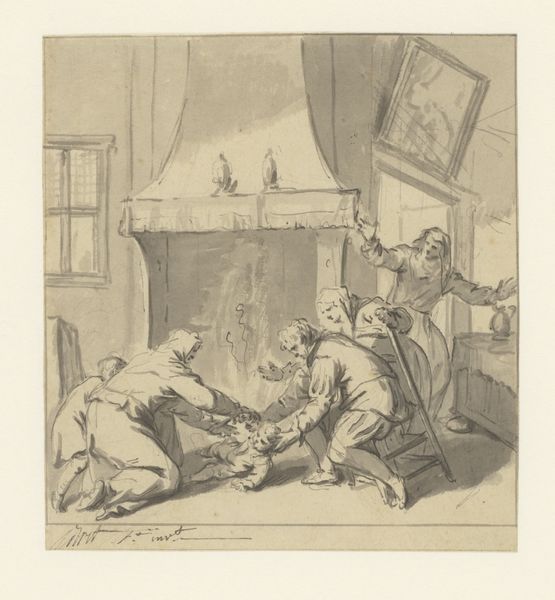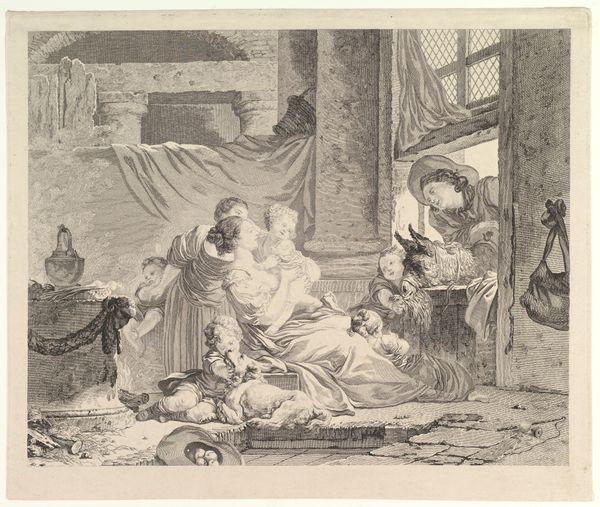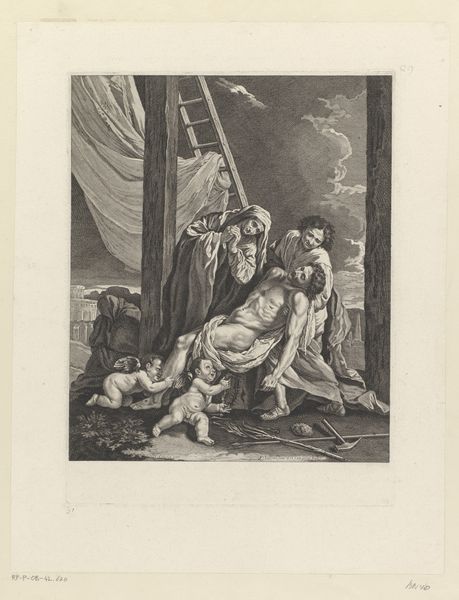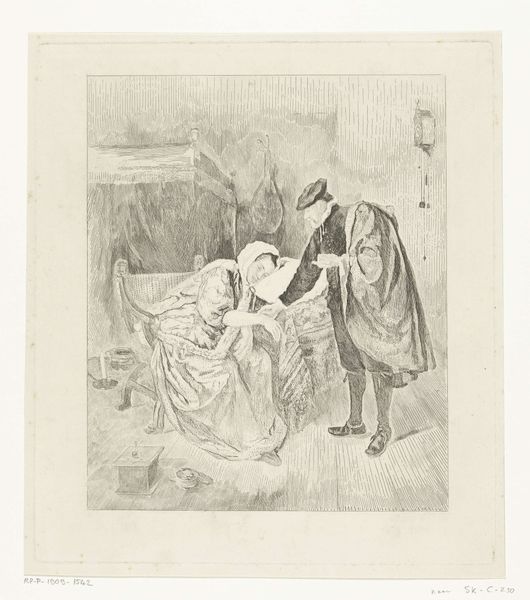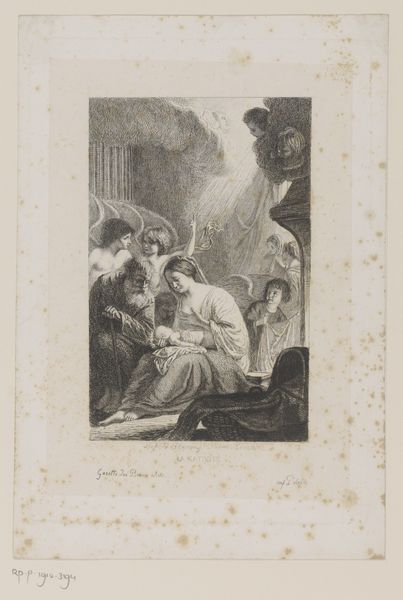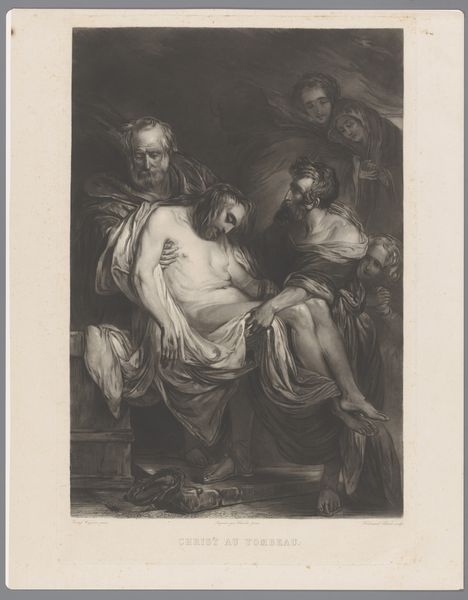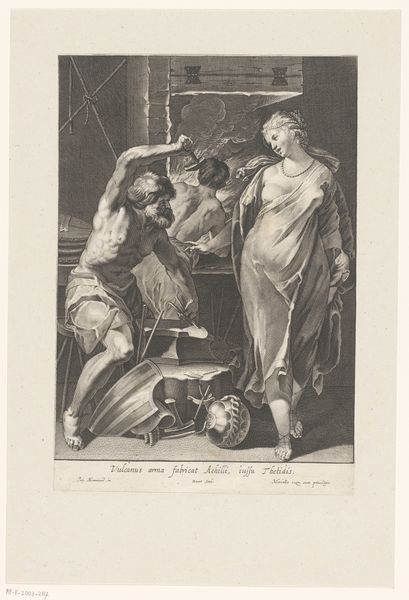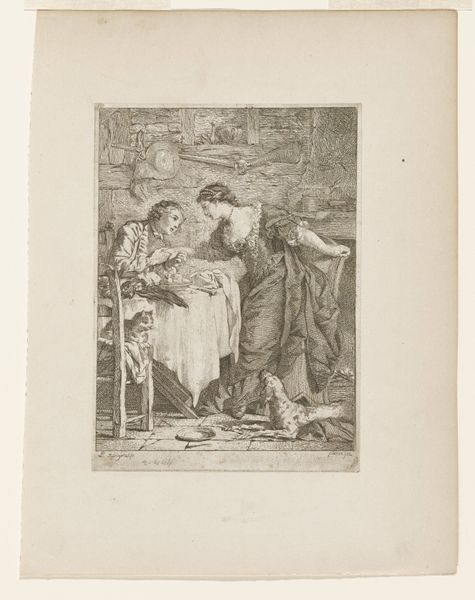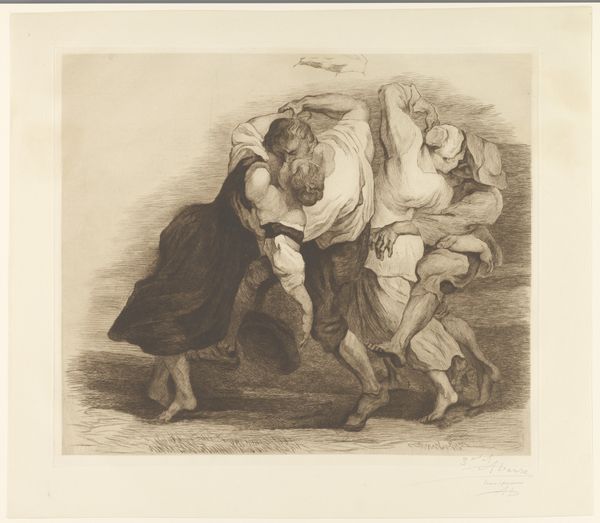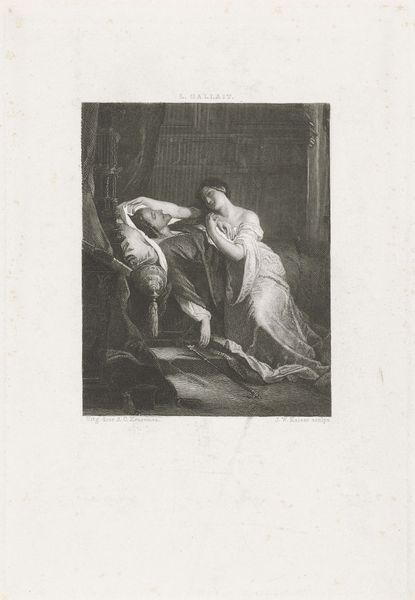
drawing, ink
#
drawing
#
ink
#
pen-ink sketch
#
portrait drawing
#
genre-painting
#
history-painting
Dimensions: height 168 mm, width 146 mm
Copyright: Rijks Museum: Open Domain
Curator: Jacob de Wit rendered this pen and ink sketch, titled "De wonderbaarlijke hostie in de as teruggevonden," sometime between 1705 and 1754. Editor: It has a dreamlike quality. The monochrome palette and fluid lines give it a sense of ethereality, as if glimpsed through memory or faith. Curator: Observe how de Wit employed hatching and cross-hatching to define form and volume. The composition is cleverly arranged to lead the eye from the foreground figures towards the background activity. Editor: The artwork depicts a miraculous scene—specifically the recovery of a consecrated host from ashes. Consider its implications for power structures within the church and the ways these are made accessible to public imagination through imagery. Curator: It is precisely through careful study of line, light, and shadow that de Wit creates a sense of dramatic tension. Semiotics decodes the symbolic placement of figures—nuns and heavenly angels overseeing a miraculous occurrence. Editor: It is vital to ask—how would different viewers throughout history interpret this representation? Who is empowered, and who is marginalized? How is this moment used to reinforce spiritual belief systems in both public and private devotion? Curator: De Wit orchestrates light and dark areas strategically. Notice how light catches the robes of the standing nuns, drawing focus to their reaction while framing the shadowed area where the miracle unfolds. Editor: The drawing, created in a period steeped in religious reform, reveals the socio-religious turbulence reflected in popular spirituality and its representational limits. It pushes us to examine how sacred subjects enter a public sphere that impacts intersectional understanding of faith. Curator: Precisely. And it is in de Wit’s capable hands that we view an exemplar model of structural ingenuity, as the sacred space comes to life. Editor: Ultimately, viewing the history surrounding an artwork makes understanding and reacting to works of art a much richer activity.
Comments
No comments
Be the first to comment and join the conversation on the ultimate creative platform.
